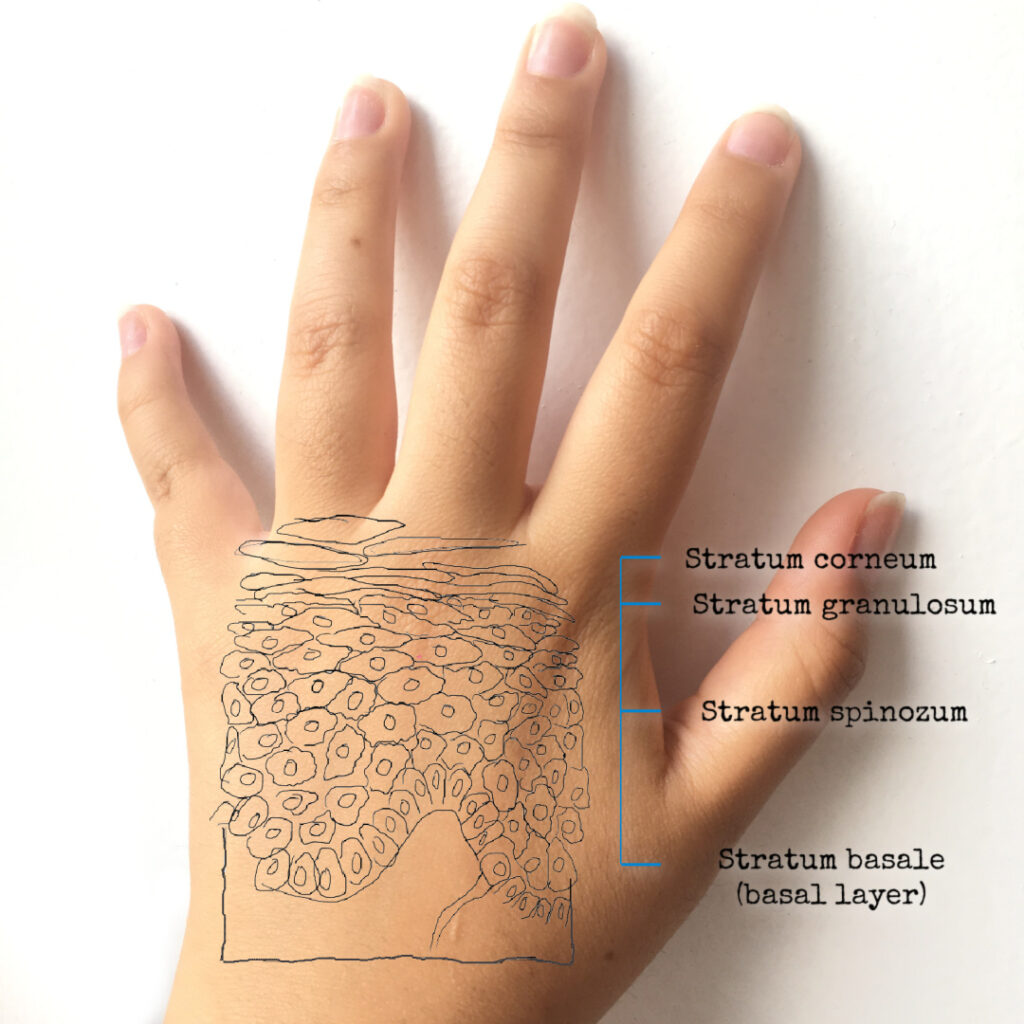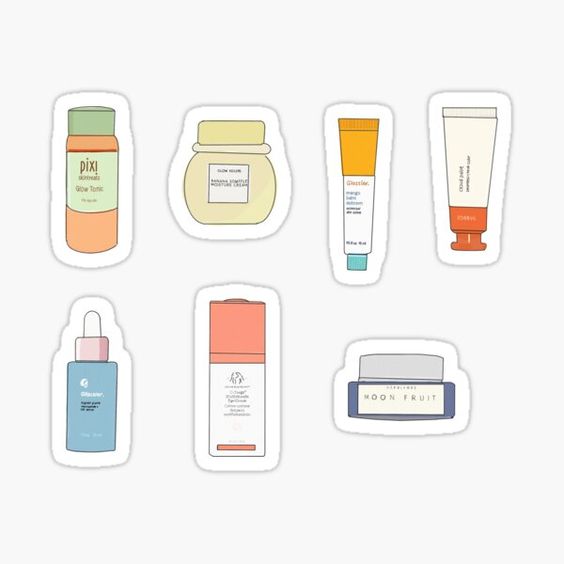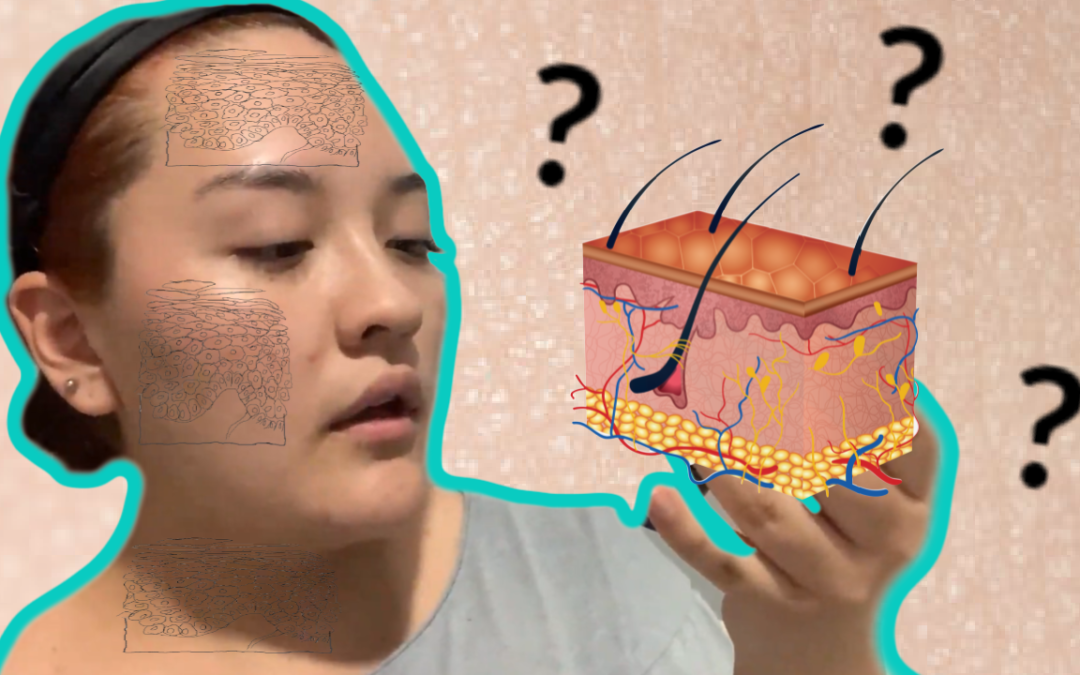As we are starting to learn about the different aspects of skincare, products, and formulas I believe we should take a step back and understand the ground we are working on. The skin surface of course. It undergoes many processes in its 3 layers; Epidermis, Dermis, and Hypodermis. Today I’d like to discuss its main process known as keratinization which can truly give you a better perspective when choosing ingredients in your skincare as well as requesting professional treatments like peels or using tools.
Keratinization: a cycle

Keratinization occurs in the upper layer of the skin, the Epidermis. Here we got different cell populations such as keratinocytes, melanocytes, langerhang cells, and Merkel cells. Each has a specific role in the proper function of the skin but keratinocytes will be our focus for today’s discussion. Keratinocytes are actually the most prominent cell population in the epidermis. About 80% of skin cells are keratinocytes. Remember when you learned in biology class cell division, you know like mitosis? Well, keratinocytes are somatic cells that undergo that process as well! They start diving (making clones of each other) in the bottom layer of the epidermis called the stratum basale. As the keratinocytes age they will move up the epidermis’ layers and create a barrier in the top of the epidermis called stratum corneum, and start shedding off or “exfoliate”. You might see this process called desquamation which is its medical term.
This cycle normally takes about 4 weeks. At this point what you and I see when we look at ourselves in the mirror are flat keratinocytes constructing the skin barrier with pretty much no organelles like mitochondria or ribosomes. That’s our skin and naturally, it needs to be maintained and nurtured for proper function and protection.
It is important to note that when this process happens too quickly skin diseases can occur. Psoriasis (sr·ai·uh·suhs), for example, happens when keratinocytes move from their basal layer to stratum corneum very quickly, like in six hours. During this period, they can’t form properly and the remnants of nuclei will be in the stratum corneum. This will look like several layers of keratinocytes stacked on top of each other. This is known as hyperproliferation.

The Epidemic of Over-exfoliation:

Now, and actually, the reason I bring this topic to your attention is when that layer of skin created by keratinocytes is cleaned up a bit too much. Yes, it is important to remove that excess keratin and other lipids (oils) found in the stratum corneum. However, it must be done responsibly and gradually. There is this “epidemic of over-exfoliation” on the internet which is one of the main reasons people give up on taking care of their skin or they start to assume no product works on them because there might be something inherently wrong with them. You might think, “Oh, if I wash my face with benzoyl peroxide, and then I scrub it with a brush, and then apply some glycolic acid, and then put some salicylic acid cream every single day and night, I’ll have perfectly clear skin!” My friend, this is what I call going overkill. You are basically removing and obliterating that skin layer that your epidermis took almost a month to create for you. Doing this so constantly is not giving enough time for your skin to undergo keratinization which is compromising the integrity and microflora of your skin.
Excess cleansing, or using hard alkaline cleansers, acidic gels, or toners and alcohols can destroy the equilibrium of your skin. For my chemistry bois, know that pH plays a role here. Your skin’s physiological pH is about 5.5. Every time you add something either too acidic or too basic to the skin the pH will fluctuate greatly. The skin defense layers will be affected negatively making bad bacteria and microorganisms more susceptible to attack!
Things to remember:

Bottom line is that you need to understand the pathological processes in the epidermis and interaction between cells when considering new products in your skincare routine. Know everything goes through a process and it takes time. Similarly, your skin needs to get used to certain ingredients and actives like vitamins A, C, E or acids like beta hydroxy acid (BHAs) which are common exfoliators. You want to help your skin so there is no accumulation of remnants that can contribute to plugs, acne, or other skin concerns. Just make sure you are incorporating those things gradually so your skin is able to adapt and continue its functional processes to keep you protected.
Don’t forget to consult with your dermatologist, especially when treating tough skin concerns!


Recent Comments